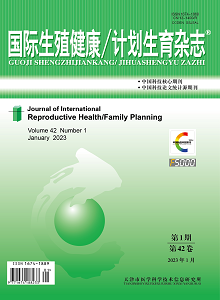Objective: To analyze the influence of three common schemes of endometrial preparation on the pregnancy outcome and related influencing factors during the frozen-thawed embryo transfer (FET) cycle after preimplantation genetic testing (PGT), so as to provide a reference for the assisted reproduction treatment of PGT patients. Methods: The clinical data and pregnancy outcomes of 195 patients with 219 cycles of FET assisted by PGT from January 2017 to January 2022 at the First Clinical Medical College of Lanzhou University were analyzed retrospectively, including the cycles of PGT for aneuploidies (PGT-A), PGT for monogenetic (PGT-M), and PGT for structural rearrangements (PGT-SR). According to the endometrial preparation schemes, these cycles were divided into three groups: the natural cycle group (NC group, 56), the gonadotropin releasing hormone agonist (GnRHa) combined with hormone replacement therapy (HRT) cycle group (GnRHa+HRT group, 102) and the simple HRT cycle group (61). The general clinical data and pregnancy outcomes of the three groups were compared, and the influencing factors of live birth were analyzed by logistic regression. Results: The NC group, GnRHa+HRT group and HRT group all achieved higher clinical pregnancy rate (64.29%, 80.39%, 73.77%, P>0.05) and live birth rate (83.33%, 85.37%, 84.44%, P>0.05). The difference of PGT methods used in the three groups was statistically significant (P=0.002). The ratio of patients receiving PGT-SR in the NC group was higher than that in GnRHa+HRT group (P<0.05). The ectopic pregnancy rate in the NC group was higher than that in the other two groups (P<0.05). There were significant differences in the BMI, number of oocytes retrieved, number of transferable embryos and number of high-quality blastocysts between the live birth group and the non live birth group (P<0.05). In addition to the above four factors, the adverse pregnancy history and total number of blastocysts (P<0.2) of the two groups were included in the logistic regression analysis. It was found that only the number of high-quality blastocysts had an impact on the pregnancy outcomes, and that the number of high-quality blastocysts >2 was a protective factor for the outcome of live birth of PGT patients (OR=0.480, P<0.05). Conclusions: The clinical pregnancy rate and live birth rate of three FET endometrial preparation protocols are similar, but the ectopic pregnancy rate in the NC group is higher. It should be noted that the BMI, number of oocytes retrieved, number of transferable embryos and number of high-quality blastocysts may jointly affect the outcome of live birth of PGT patients, especially the number of high-quality blastocysts, so as to improve the live birth rate of PGT patients.

